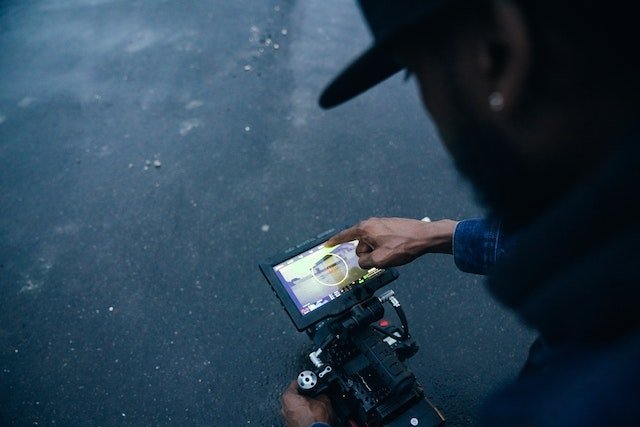Mastering White Balance in Cinematography: A Comprehensive Guide to Capturing Accurate Colors
In the world of cinematography, capturing accurate colors is of utmost importance. Every filmmaker strives to create visually appealing and immersive experiences for their audience, and one of the key factors that contribute to this is achieving precise white balance. White balance refers to the adjustment of colors in a scene to accurately represent the true colors as perceived by the human eye. In this comprehensive guide, we will explore the importance of white balance in cinematography and provide you with valuable tips to master this crucial aspect of capturing accurate colors.
Understanding White Balance:
Before diving into the techniques of mastering white balance, let's understand its significance in cinematography. Our eyes are adept at adjusting to different lighting conditions, automatically interpreting white as white, regardless of whether it is illuminated by sunlight, fluorescent lights, or candlelight. However, cameras do not possess this innate ability. They rely on the cinematographer's expertise to set the correct white balance, ensuring that the colors captured on film or digital media accurately represent the scene.
White balance is typically measured using the Kelvin temperature scale. Different lighting sources emit light at various temperatures, measured in degrees Kelvin (K). For instance, natural daylight is considered around 5600K, while tungsten lights commonly used in indoor settings have a temperature of approximately 3200K. By adjusting the camera's white balance settings, cinematographers can compensate for the color temperature of the lighting in a scene, ensuring accurate color reproduction.
Mastering White Balance:
-
Understand Color Temperature: Familiarize yourself with the color temperatures associated with various lighting sources commonly used in cinematography. This knowledge will help you choose the appropriate white balance settings for each scene.
-
Use a Gray Card: A gray card is a handy tool that reflects a neutral shade of gray when exposed to light. By placing a gray card in the scene, you can use it as a reference point to set the white balance accurately. Simply fill the frame with the gray card, adjust the white balance settings, and remove the card before shooting.
-
Custom White Balance: Many cinema cameras offer the option of custom white balance. This involves capturing an image of a white or neutral gray object in the scene under the given lighting conditions and using it as a reference for setting the white balance. Refer to your camera's manual for specific instructions on how to perform a custom white balance.
-
Shoot RAW: If your camera supports shooting in RAW format, it is highly recommended to do so. RAW files retain all the sensor data captured by the camera, providing greater flexibility in post-production for fine-tuning white balance and other color corrections without compromising image quality.
-
Test Shots: Conduct test shots under different lighting conditions to get a better understanding of how different color temperatures affect the overall look of the scene. This experimentation will help you develop an intuitive sense of the appropriate white balance settings for various scenarios.
-
Lighting Control: As a cinematographer, you have the power to manipulate lighting to your advantage. Understanding how different light sources interact with your scene will allow you to create a more cohesive visual narrative. Consider using gels or filters to modify the color temperature of specific lights to achieve the desired effect.
-
White Balance Shift: Sometimes, deliberately shifting the white balance can create a specific mood or enhance the storytelling. For example, adding a slight blue tint to a scene shot under warm tungsten lighting can evoke a cool and somber atmosphere. Experiment with creative white balance shifts to add a unique touch to your visuals.
-
Monitor Calibration: Ensure that your monitor is properly calibrated to accurately display colors. Calibration tools and software can help you achieve consistency in color representation across different devices, ensuring your artistic vision remains intact.
-
Conclusion:
Mastering white balance in cinematography is an essential skill for every filmmaker. It allows you to capture accurate colors, enhance the visual appeal of your scenes, and maintain consistency throughout your project. By understanding color temperature, using tools like gray cards, and leveraging your camera's white balance settings, you can achieve precise color reproduction.
Remember to conduct test shots, experiment with lighting control, and explore creative white balance shifts to add depth and meaning to your visuals. Shooting in RAW format provides greater flexibility in post-production, allowing you to fine-tune white balance and make other color corrections without sacrificing image quality.
Furthermore, ensure that your monitor is properly calibrated to accurately display colors. This will help you maintain consistency and ensure that your artistic vision remains intact across different devices.
Mastering white balance takes time, practice, and a keen eye for detail. Don't be afraid to experiment, learn from your mistakes, and continue refining your skills. As a cinematographer, your ability to capture accurate colors through precise white balance will significantly impact the overall quality and impact of your films.
So, embrace the power of white balance, unleash your creativity, and embark on a journey to captivate your audience with visually stunning and color-accurate cinematic experiences.

